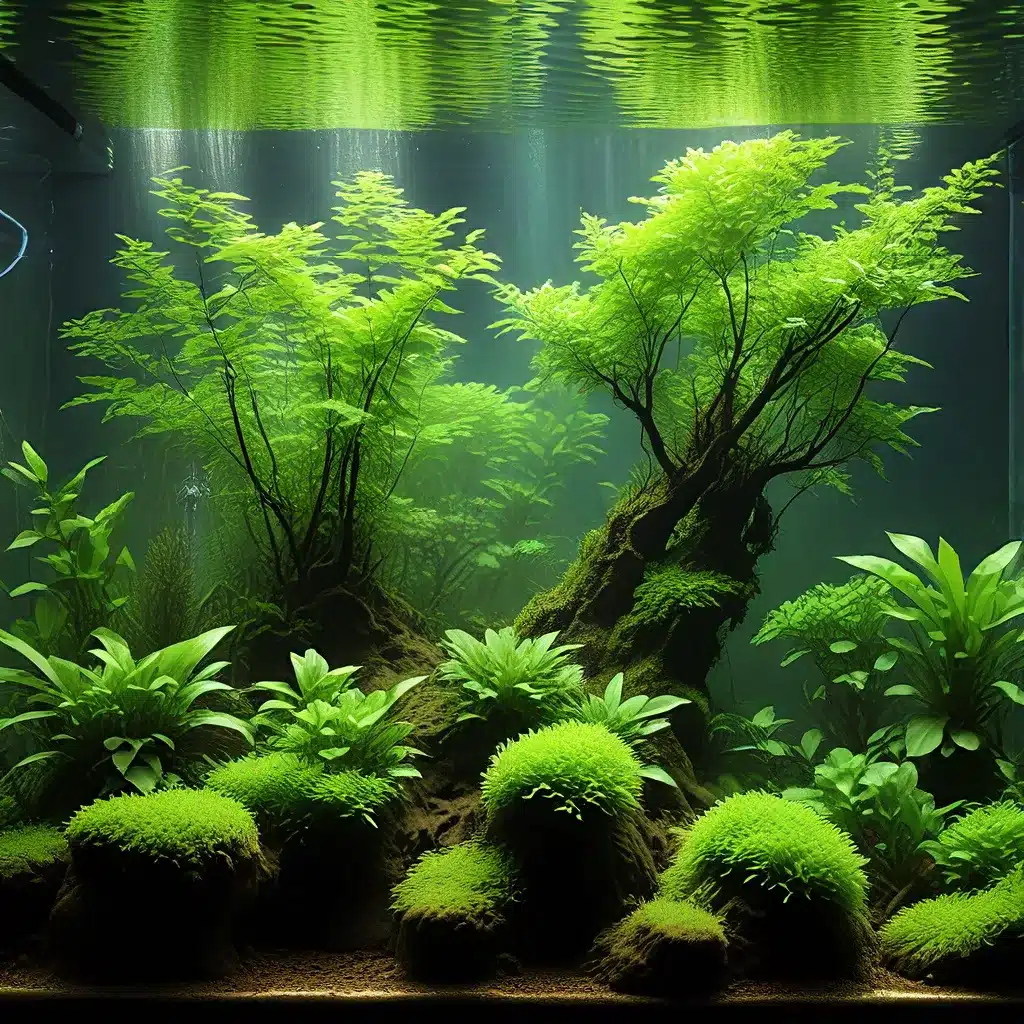
Exploring the Role of Carbon Dioxide in Aquatic Plant Ecosystems
Carbon dioxide (CO2) plays a crucial role in the health and growth of aquatic plants within aquarium environments. As the foundation of the photosynthetic process, CO2 is essential for plants to thrive, converting sunlight, water, and nutrients into the energy and structures they need to flourish. Understanding the intricate balance of CO2 in an aquarium setting is paramount for aquarists seeking to cultivate lush, vibrant underwater landscapes.
Aquatic plants have evolved remarkable adaptations to efficiently utilize available CO2, whether it is naturally present in the water or supplemented by the aquarist. The delicate interplay between light, water chemistry, and plant physiology determines the optimal CO2 levels for maximizing photosynthesis and growth. By mastering the principles of CO2 management, aquarists can unlock the true potential of their aquascapes, creating dynamic, thriving ecosystems that captivate the senses.
The Science of Aquarium CO2 Injection
Injecting supplemental CO2 into an aquarium is a common practice among advanced aquarists seeking to optimize plant growth and health. This technique involves precisely dosing the water with concentrated CO2 gas or liquid solutions, providing an additional carbon source beyond what is naturally present. When implemented correctly, CO2 injection can dramatically enhance the performance of aquatic plants, leading to lush, vibrant growth, vibrant coloration, and a healthier overall ecosystem.
The Photosynthetic Pathway:
At the heart of aquarium CO2 management is the understanding of photosynthesis, the process by which plants convert light energy, water, and carbon dioxide into glucose and oxygen. During this process, plants absorb CO2 from the water and release oxygen as a byproduct. By maintaining appropriate CO2 levels, aquarists can ensure that their plants have access to the essential carbon they require to thrive.
Factors Influencing CO2 Levels:
Several key factors influence the optimal CO2 levels in an aquarium, including plant density, lighting intensity, water temperature, and water circulation. Aquarists must carefully balance these variables to create an environment that supports robust plant growth without causing distress or imbalance to other aquatic inhabitants.
Measurement and Monitoring:
Accurately measuring and monitoring CO2 levels is crucial for effective management. Aquarists can employ a variety of tools, such as pH meters, drop checkers, and electronic CO2 sensors, to continuously track and adjust their CO2 dosing regimen. By closely monitoring these levels, aquarists can fine-tune their CO2 injection system to maintain the ideal balance for their specific aquarium setup.
Implementing CO2 Injection Systems
Integrating a CO2 injection system into an aquarium requires careful planning and execution. Aquarists must consider the specific needs of their aquarium, the type of plants they are cultivating, and the overall ecosystem balance. Properly installing and maintaining a CO2 system is essential for ensuring the long-term success of your aquascape.
CO2 Delivery Methods:
The most common methods for introducing CO2 into an aquarium include pressurized CO2 systems, DIY yeast-based setups, and liquid CO2 solutions. Each approach has its own advantages and considerations, and aquarists must evaluate their specific needs, budget, and technical expertise to determine the best fit for their setup.
Regulating CO2 Levels:
Maintaining the appropriate CO2 concentration is crucial for plant health and growth. Aquarists must carefully monitor and adjust their CO2 dosing to avoid fluctuations that can stress or harm their aquatic inhabitants. This may involve the use of solenoid valves, flow regulators, and timers to precisely control the CO2 injection rate.
Integrating CO2 with Lighting and Fertilization:
For optimal results, aquarists must also consider the integration of CO2 injection with their aquarium’s lighting schedule and fertilization regime. Aligning these factors ensures that plants have access to the necessary resources (light, carbon, and nutrients) to support their growth and development, creating a thriving, balanced ecosystem.
Troubleshooting and Optimizing CO2 Systems
As with any aquarium component, CO2 injection systems can encounter challenges and require ongoing maintenance and optimization. Aquarists must be prepared to address common issues, such as fluctuating CO2 levels, plant responses, and equipment malfunctions, to maintain the health and stability of their aquarium.
Recognizing and Addressing CO2 Imbalances:
Identifying signs of CO2 imbalance, such as algae growth, plant stress, or fish distress, is crucial for swift intervention. Aquarists must be able to diagnose the underlying causes and implement appropriate adjustments to their CO2 dosing, water parameters, and other environmental factors.
Maintaining CO2 Injection Equipment:
Proper maintenance of CO2 system components, including regulators, diffusers, and tubing, is essential for ensuring reliable, long-term performance. Regular cleaning, calibration, and replacement of worn parts can help prevent equipment failures and ensure consistent CO2 delivery.
Optimizing CO2 Efficiency:
Aquarists can further enhance the efficiency of their CO2 systems by exploring advanced techniques, such as using in-line diffusers, optimizing water circulation, and incorporating pH-controlled solenoids. These strategies can help maximize the utilization of injected CO2, reducing waste and ensuring plants receive the optimal carbon source.
Conclusion: Cultivating Thriving Aquascapes with CO2
Mastering the art of aquarium CO2 management is a crucial step in creating vibrant, healthy underwater gardens. By understanding the science behind photosynthesis, implementing well-designed CO2 injection systems, and continuously optimizing their aquarium environments, aquarists can unlock the true potential of their aquatic plants, fostering lush, captivating aquascapes that thrive and inspire.
Explore the wide range of aquarium equipment and resources available to support your CO2 management journey and take your aquarium to new heights of beauty and balance.

